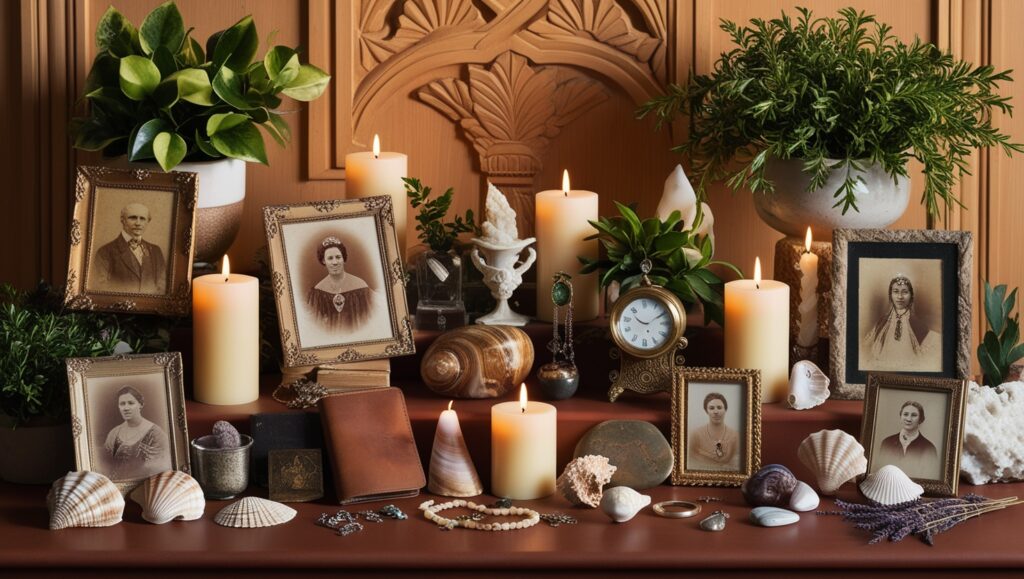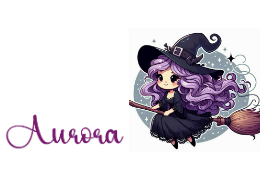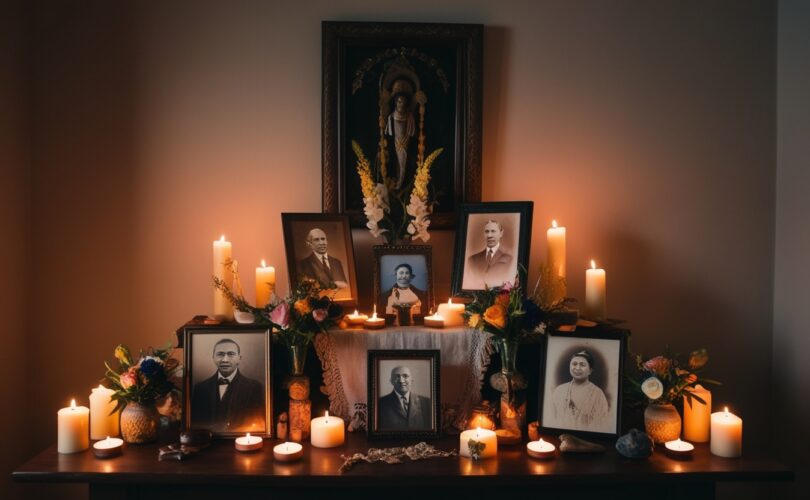I remember the first time I felt truly connected to my ancestors. It wasn’t in a history book or during a family reunion. It was when I created my first ancestral altar. The experience was so profound, so healing, that I knew I had to share it with others. That’s why I’m here today, to guide you through the process of crafting your own ancestral altar and embarking on a journey of spiritual healing.
Why Create an Ancestral Altar?
Before we dive into the how-to’s, let’s talk about why creating an ancestral altar can be so powerful. In our fast-paced, modern world, it’s easy to feel disconnected from our roots. We often forget the wisdom, strength, and love that our ancestors can offer us, even long after they’ve passed.
An ancestral altar serves as a bridge between past and present, a sacred space where we can honor our lineage and tap into the collective wisdom of those who came before us. It’s not just about remembering; it’s about healing generational wounds, finding strength in our heritage, and cultivating a deeper sense of belonging .For me, creating an ancestral altar was like opening a door to a part of myself I didn’t even know existed. It helped me understand my place in the grand tapestry of my family’s history and gave me a profound sense of peace and purpose.

Choosing Your Space
The first step in creating your ancestral altar is choosing the right space. This doesn’t have to be an entire room – a small shelf, a corner of your desk, or even a windowsill can work perfectly. The key is to choose a spot that feels special and sacred to you.When I created my first altar, I chose a quiet corner in my bedroom. It wasn’t anything fancy, just a small table near a window, but it felt right. The morning light would hit it just so, creating a warm, inviting glow that made me want to spend time there.Remember, this is your sacred space. Choose a location that speaks to you, where you can comfortably sit or stand and connect with your ancestors. It should be a place where you can have some privacy and won’t be disturbed during your rituals or meditation .
Gathering Your Items
Now comes the fun part – gathering items for your altar. This is where you can really get creative and personal. Here are some ideas to get you started:
- Photographs: Old family photos are a wonderful way to visually connect with your ancestors. Don’t worry if you don’t have many – even one or two can be powerful.
- Heirlooms: Do you have any family heirlooms? A piece of jewelry, a tool, or even a book passed down through generations can be a beautiful addition to your altar.
- Natural elements: Stones, feathers, or plants that are native to your ancestral lands can help ground your altar in the physical world.
- Candles: Candles represent light and can symbolize the eternal flame of your ancestral line.
- Offerings: Small dishes for offerings like food, drink, or flowers are traditional in many cultures.
- Personal items: Things that remind you of specific ancestors or your heritage in general.
When I was gathering items for my altar, I found an old pocket watch that had belonged to my great-grandfather. I had never met him, but holding that watch made me feel connected to him in a way I never had before. It became the centerpiece of my altar.

Setting Up Your Altar
Now that you’ve chosen your space and gathered your items, it’s time to set up your altar. There’s no one “right” way to do this – the most important thing is that it feels meaningful to you. However, here are some general guidelines that I’ve found helpful:
- Cleanse your space: Before you begin, cleanse your chosen area. You can do this by burning sage, using sound (like a bell or singing bowl), or simply visualizing a white light purifying the space.
- Create levels: If possible, create different levels on your altar. This can be done with boxes or stands covered in cloth. It adds visual interest and can represent different generations or aspects of your ancestry.
- Place your ancestors: Put photos or representations of your ancestors at the center or highest point of your altar.
- Add personal touches: Arrange your gathered items in a way that feels right to you. There’s no wrong way to do this – trust your intuition.
- Include the elements: If it resonates with you, include representations of the four elements (earth, air, fire, water). This could be a stone, a feather, a candle, and a small bowl of water.
- Leave space for offerings: Make sure to leave some empty space for future offerings or new items you might want to add.
When I set up my altar, I found myself naturally creating a kind of family tree structure, with my most distant known ancestors at the top and working my way down to more recent generations. It helped me visualize my place in the family lineage .
Working with Your Altar
Creating your altar is just the beginning. The real magic happens when you start actively working with it. Here are some ways you can engage with your ancestral altar:
- Daily acknowledgment: Start your day by simply acknowledging your ancestors. Light a candle, say good morning, or spend a few moments in quiet reflection.
- Meditation: Use your altar as a focal point for meditation. You can ask for guidance, express gratitude, or simply sit in the presence of your ancestors.
- Offerings: Regularly place offerings on your altar. This could be flowers, food, drinks, or anything else that feels appropriate. Remember, it’s the intention that counts.
- Rituals: Create rituals around significant dates like birthdays, death anniversaries, or cultural holidays. This could involve lighting candles, saying prayers, or sharing stories.
- Journaling: Keep a journal near your altar to record any insights, dreams, or messages you receive.
- Family history research: Use your altar as inspiration to delve deeper into your family history. As you learn more, you can add new elements to your altar.
I remember the first time I sat in front of my completed altar. I lit a candle, closed my eyes, and just breathed. In that moment, I felt a deep sense of peace wash over me. It was as if all the generations before me were there, supporting me, loving me. It was a profound experience of healing and connection.

The Healing Power of Ancestral Connection
As you work with your altar, you may start to notice changes in your life. This is where the real healing begins. Connecting with our ancestors can:
- Provide a sense of belonging: Knowing where we come from can give us a stronger sense of who we are.
- Heal generational trauma: By acknowledging and honoring our ancestors, we can begin to heal wounds that have been passed down through generations.
- Offer guidance and support: Many people report feeling guided and supported by their ancestors in times of need.
- Increase self-understanding: Learning about our ancestors can help us understand our own patterns, strengths, and challenges.
- Foster gratitude: Recognizing the sacrifices and strengths of our ancestors can cultivate a deep sense of gratitude.
- Strengthen family bonds: Working with an ancestral altar can inspire conversations and connections with living family members.
For me, the healing came in waves. At first, it was subtle – a growing sense of peace and belonging. But as I continued to work with my altar, I found myself healing old family wounds, understanding myself better, and feeling more grounded in my life .Creating an ancestral altar is a deeply personal and potentially transformative practice. It’s a way to honor those who came before us, connect with our roots, and facilitate healing on multiple levels. Remember, there’s no right or wrong way to do this. Trust your intuition, be open to the process, and allow the wisdom of your ancestors to guide you.
Crafting an ancestral altar is a beautiful way to connect with your roots, honor your lineage, and facilitate personal healing. It’s a practice that can bring a sense of belonging, guidance, and peace into your life. Remember, this is your journey. Trust your intuition, be open to the process, and allow the wisdom of your ancestors to guide you.
I hope this guide inspires you to create your own ancestral altar. It’s been one of the most meaningful practices in my life, and I believe it has the power to bring healing and connection to anyone who approaches it with an open heart.
May your ancestral altar bring you the healing and connection you seek.

FAQs
Q: Do I need to know a lot about my family history to create an ancestral altar?
A: Not at all! You can start with whatever information you have, even if it’s limited. The altar can be a starting point for learning more about your ancestry.
Q: What if I come from a mixed cultural background?
A: Embrace it! Your altar can reflect all aspects of your heritage. It’s a beautiful way to honor the diversity of your ancestry.
Q: How often should I interact with my ancestral altar?
A: This is entirely up to you. Some people engage with their altar daily, while others do so on special occasions. Find a rhythm that feels right for you.
Q: Can I create an altar if I’m adopted or don’t know my biological family?
A: Absolutely! Your altar can honor your adoptive family, your biological family (even if unknown), or both. It can also be a space to connect with the general concept of ancestry and lineage.
Q: Is creating an ancestral altar religious?
A: While ancestral altars are part of some religious traditions, creating one doesn’t have to be a religious act. It can be a spiritual, cultural, or simply personal practice.






